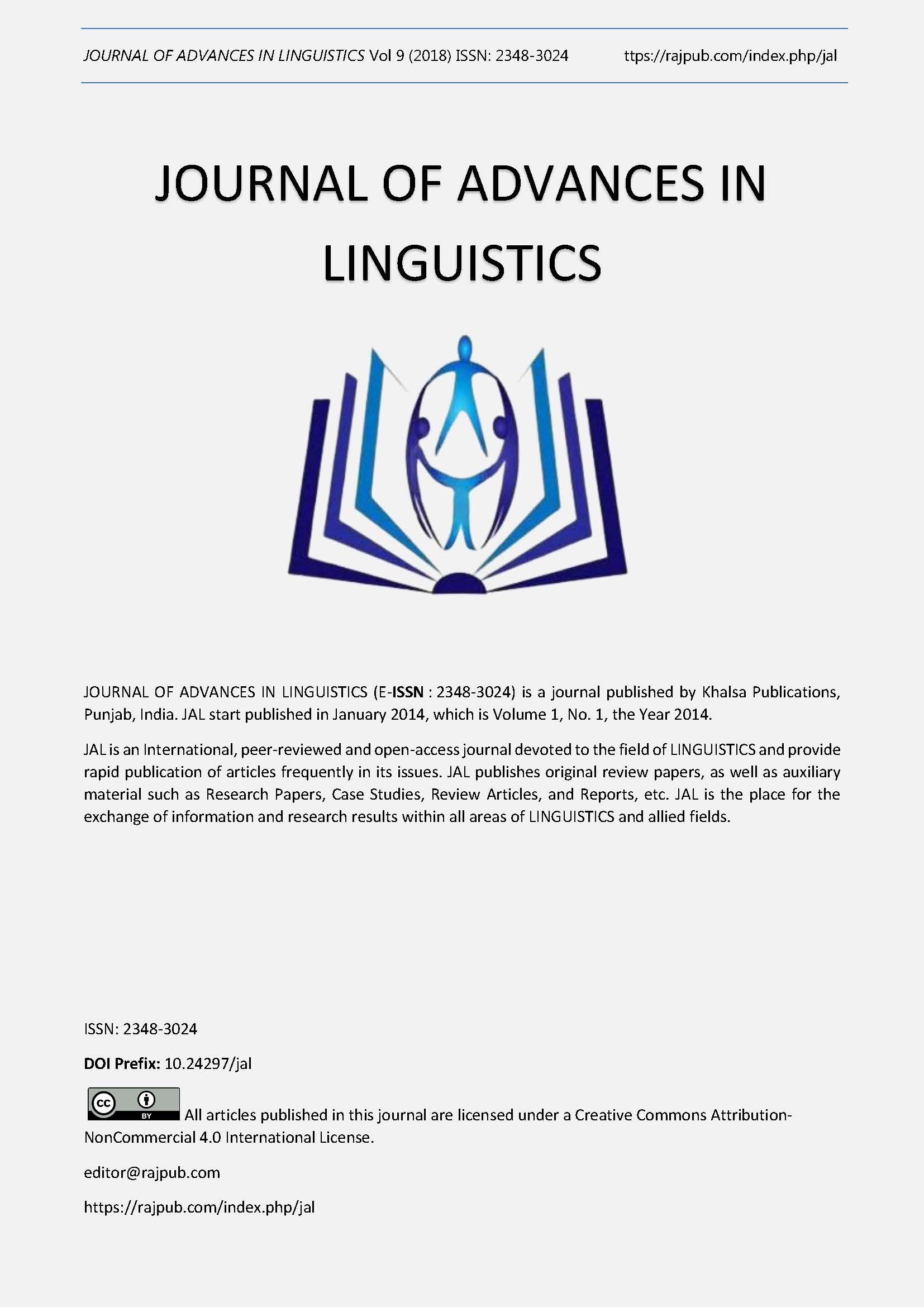The Grammatical Errors in Debate Arguments Made by Students of Global English Language Center
DOI:
https://doi.org/10.24297/jal.v9i0.7324Keywords:
Grammatical ErrorsAbstract
The thesis entitled Grammatical Errors in Debate Arguments Made by the Students of Global English Language Center. The objectives of this study were (1) to find out the kinds of errors made by the students of Global English Language Center in their debate arguments and (2) to find out the causes of errors made by the students of Global English Language Center in their debate arguments. The writer used descriptive-qualitative method of research. The population of this study was all the students of Global English Language Center. The sample was chosen by using purposive sampling. The samples were 12 students which were grouped into two debate sessions. The data were calculated and analyzed based on surface strategy taxonomy and linguistic category taxonomy to know the errors. Samples' personal reasons and personal judgement were used to know the causes of the errors. The findings showed that there were four types of errors that the students made which are omission, addition, misformation, and misordering. Misformation is the major error made by the students. Nervousness, time limit, native language interference, and the insufficient grammar learning were the causes why the students made errors.
Downloads
References
Besnar, P. & Hunter, A. (2008). Elements of Argumentation. England: The MIT Press.
Broughton, G. & Brumfit, C. & Pincas, A. & Wilde, R.D. (1980). Teaching English as a Foreign Language. New York, NY : Routlegde.
Cohen, L. & Manion, L. & Morison, K. (2007). Research Methods in Education (6Th ed.). Canada, CN: Routledge.
Creswell, J. W. (2014). Research Design : Qualitative, Quantitative, and Mixed Methods Approaches 4th Edition. USA: SAGE Publications.
Downing, A. & Locke, P. (2006). English Grammar: A University Course Second Edition. Canada, CN: Routledge.
Dulay, H. & Burt, M. & Krashen, S. (1982). Language Two. New York, NY: Oxford University Press.
Richards, J. (1971). Error Analysis and Second Language Strategies. Canada, CN: Department of Linguistics University Laval.
Susanti, R. (2016). STUDENTS’ PERCEPTIONS TOWARDS THE EFFECTIVE FEEDBACK PRACTICES IN THE LARGE EFL WRITING CLASS BASED ON STUDENTS’ ENGLISH PROFICIENCY LEVEL. Journal of Advances in Linguistics.
Syahri, I. & Susanti, R. (2016). An Analysis of Local and Target Culture Integration in the English Textbooks for Senior High School in Palembang. Journal of Education and Human Development.
Richards, J.C. & Schmidt, R. (2010). Longman Dictionary Of Language Teaching And Applied Linguistics. (4th ed.). London: Pearson Education
Syahri, I. & Sulaiman, M. & Susanti, R. (2017). Metodologi Penelitian Pendidikan Bahasa. Palembang, PLG: Universitas Muhammadiyah Palembang.
Touchie, H. Y. (1986). Second Language Learning Errors: Their Types, Causes, And Treatment. JALT Journal , 77.
Wingate, U. (2012). ‘Argument!’ helping students understand what essay writing is about. Journal of English for Academic Purposes,
Downloads
Published
How to Cite
Issue
Section
License
 All articles published in Journal of Advances in Linguistics are licensed under a Creative Commons Attribution 4.0 International License.
All articles published in Journal of Advances in Linguistics are licensed under a Creative Commons Attribution 4.0 International License.




